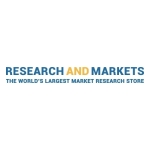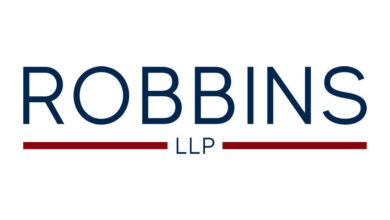Global 5G in IoT Market (2021 to 2026) – by Connectivity, Infrastructure, Sensors, Devices and Things – ResearchAndMarkets.com

DUBLIN–(BUSINESS WIRE)–The “5G in IoT by Connectivity, Infrastructure, Sensors, Devices (Type, Sector, Verticals), and Things 2021 – 2026” report has been added to ResearchAndMarkets.com’s offering.
This report assesses 5G technologies and solutions in support of the Internet of Things (IoT) and includes an evaluation of key solution such as 5G enabled Mobile Edge Computing (MEC) and managed services for devices and IoT “things”. The report also analyzes the impact of 5G in IoT across infrastructure components including hardware, processors, embedded devices, software, and cloud-based service platforms. The report includes detailed forecasts through 2026.
Companies Analysed
- Cisco Systems Inc.
- Nokia Networks
- Samsung Electronics Co. Ltd.
- Ericsson AB
- Qualcomm Incorporated
- Huawei Technologies Co. Ltd.
- Intel Corporation
- AT&T Inc.
- SK Telecom Co. Ltd.
- LG Electronics Inc.
- Verizon Communications
- T-Mobile US Inc.
- KT Corporation
- China Mobile
- NEC Corporation
- Fujitsu Ltd.
- ZTE Corporation
- Deutsche Telekom AG
- NTT DoCoMo Inc.
- NTT DATA Corporation
- Broadcom Corporation
- LG Uplus Corp.
- SingTel
Select Report Findings
- The 5G in IoT market will approach $272.4 billion globally by 2026 at 17.6% CAGR
- 5G and IoT enabled smart machines represent a $2.9 billion global opportunity by 2026
- Device-level SLAs will be crucial for ensuring enterprise and industrial QoS requirements
- 5G is a must for in-building private wireless networks in support of ultra-reliable IoT applications
- Application revenue for edge computing in 5G will exceed 52% of infrastructure spending by 2026
- Driven by edge computing, micro-datacenters represent a $3.2B USD opportunity globally by 2026
The commercial deployment and operation of 5G will bring very important benefits to the ICT industry. One of those will be massive Internet of Things (IoT) networks, which refers to the ability of deploying and operating IoT systems at a very large scale. As the size of IoT systems grow to large scale, their scope will also increase in terms of the impact on enterprise systems and consumers’ everyday lives. 5G will optimize IoT networks by way of radio frequency management that meets the needs of both narrowband IoT applications as well as those that require higher bandwidth, which may be on an on-demand basis.
IoT solutions will benefit greatly from the implementation of 5G as cellular providers deploy Low Power WAN (LPWAN) IoT network capabilities. Initial deployments of IoT LPWANs have been non-cellular solutions based on proprietary technologies. However, the author sees emerging standards such as Narrowband IoT (NB-IoT) assuming a dominant role for certain IoT applications. We see many industry verticals willing to pay a premium over non-cellular LPWAN, enhanced flexibility, and improved capabilities associated with IoT on 5G networks. The use of 5G for Industrial IoT (IIoT) networks in particular will be of great importance to enterprise IIoT in certain industry verticals such as agriculture, logistics, and manufacturing. For example, we see IIoT in agriculture leveraging the use of Unmanned Aerial Vehicle (UAV) operation over 5G networks due to ultra-low latency and high capacity availability.
Deployed in conjunction with 5G, Mobile Edge Computing (MEC), will facilitate an entirely new class of low-power devices for IoT networks and systems. These devices will rely upon MEC equipment for processing. Stated differently, some IoT devices will be very light-weight computationally speaking, relying upon edge computing nodes for most of their computation needs. MEC is also important to 5G for non-IoT applications as support for improved mobile broadband (ultra-fast and high definition video, enhanced web browsing, etc.) and Ultra Reliable Low Latency Communications (URLLC) dependent apps (virtual reality, UAV operation, autonomous vehicles, robotics, etc.).
The “things” involved in IoT varies from devices used to detect, actuate, signal, engage, and more. IoT things also involve everything from gateways, modules, and sensors to hardware and embedded software within products and equipment and other consumer, enterprise, and industrial assets. The IoT ecosystem could easily become highly cumbersome with so many different “things” to consider as part of IoT provisioning, activation, administration and other management functions. Accordingly, there is a keen need for managed service solutions in support of provisioning, administration, maintenance, and security.
Key Topics Covered:
1 Executive Summary
2 Introduction
3 5G IoT Ecosystem Analysis
4 Managing the “Things” in IoT
5 Managing Devices in Support of IoT “Things”
6 5G in IoT Market Analysis and Forecasts 2021 – 2026
7 5G IoT Device and Things Market Analysis and Forecasts 2021 – 2026
8 5G IoT Use Cases
9 Company Analysis
10 Conclusions and Recommendations
11 Appendix: 5G Supporting Technologies
For more information about this report visit https://www.researchandmarkets.com/r/wjdegv
Contacts
ResearchAndMarkets.com
Laura Wood, Senior Press Manager
[email protected]
For E.S.T Office Hours Call 1-917-300-0470
For U.S./CAN Toll Free Call 1-800-526-8630
For GMT Office Hours Call +353-1-416-8900



